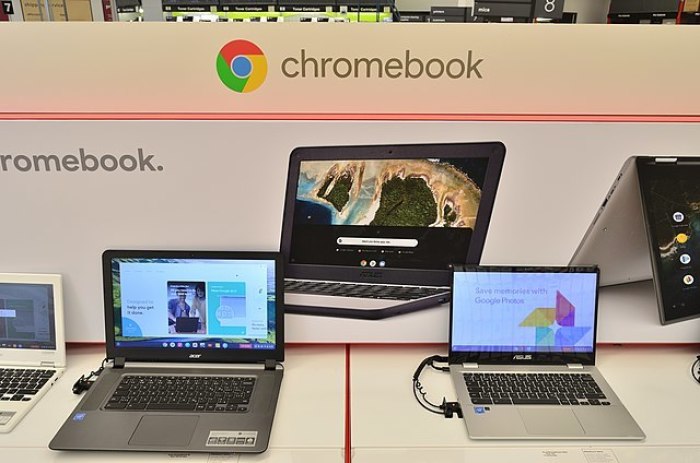Google Chromebook dropped from ‘Dirty Dozen List’ of entities that foster sexual exploitation

An organization centered on combating sexual exploitation has dropped Google Chromebook from its list of worst offenders after Google implemented new safety standards for their product.
The National Center on Sexual Exploitation announced Wednesday that Google Chromebook was being removed from its 2021 Dirty Dozen List, which includes big tech companies and corporations that profit off sexual exploitation.
“Google’s move to default devices and products to safety for kids is now an industry standard, and we urge other tech companies to follow suit,” said Lina Nealon, director of corporate and strategic initiatives for NCOSE, in a statement. “Given the safety measures that have been implemented as of today, we have removed Google Chromebook from our 2021 Dirty Dozen List,” Nealon added.
“The improvements were long sought-after by NCOSE and its allies and ultimately will limit the amount of exposure to harmful content and potential predators through school-issued Chromebooks.”
NCOSE released its annual Dirty Dozen List back in February. Google Chromebook, which has been used extensively for educational materials for children and teachers before and during the pandemic, made the list due to concerns about graphic content.
According to NCOSE at the time, Google had refused to take basic safety measures to greatly reduce the risk that children using Chromebook would access “harmful material like pornography” and possibly be introduced to online predators.
“Even prior to the pandemic, we read countless news stories and received personal accounts of children easily accessing harmful material through their school-issued Chromebooks — at school and at home,” explained NCOSE as part of their Dirty Dozen List.
“Now, with overburdened school administrators and overwhelmed teachers and parents trying to navigate new technology tools and the challenges of virtual schooling, devices are often left insufficiently protected.”
In late June, Jennifer Holland, director of education program management at Google, announced that they were going to implement various safety measures for their Chromebook product, which were scheduled to take effect at the start of September.
“We’re launching a new age-based access setting to make it easier for admins to tailor experiences for their users based on age when using Google services like YouTube, Photos and Maps,” wrote Holland.
“Starting today, all admins from primary and secondary institutions must indicate which of their users, such as their teachers and staff, are 18 and older using organizational units or groups in Admin Console.”
Holland explained that after Sept. 1, “students who are under 18 will see changes in their experience across Google products.”
“For example ... students designated as under 18 in K-12 domains can view YouTube content assigned by teachers, but they won’t be able to post videos, comment or livestream using their school Google account,” Holland added.
“If admins don’t make a selection, ... primary and secondary institutions' users will all default to the under-18 experience, while higher-education institutions users will default to the 18-and-older experience.”





























